Research
Research Interests
My research lies at the intersection of machine learning, network science, and AI security. Generally speaking, I am interested in developing machine learning and data mining algorithms to uncover actionable insights from complex, dynamic systems and large-scale, networked data in real-world applications. Particularly, I am interested in the following topics:
- Network Analytics
- Anomaly Detection
- Causal AI
- Explainable Machine Learning
Projects
AIOps: Evoking Intelligence in Operations
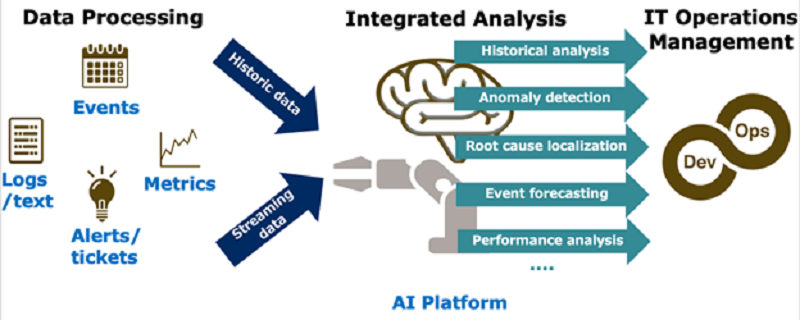
IT operation is one of the technological foundations of the increasingly digitalized world. It is responsible for ensuring that digitalized businesses and societies run reliably, efficiently and safely. With the rapid advances in networking, computers, and hardware, we face an explosive growth of complexity in networked applications and information services. These large-scale, often distributed, information systems usually consist of a great variety of components that work together in a highly complex, coordinated, and evolving manner. Moreover, terabytes of heterogeneous data per day including metrics data, log data, and event data, overwhelm Ops engineers.
This project aims to develop unique AI techniques that provide a 360-degree understanding of IT operations and fully automate critical dimensions of IT operations monitoring, including historical analysis, anomaly detection, root cause localization, event forecasting, and performance analysis. Our solution for AIOps is a continuous automatic IT operations management system powered by deep neural networks, graph AI, and statistical models.
Besides application in AIOps, our techniques can offer “Intelligent operation and maintenance” as a service for a wide range of applications, including industrial preventive maintenance, healthcare, cyber security, automobile, and smart factories.
Representative Papers: [MATMCD] [MULAN @ WWW'24] [REASON @ KDD'23] [CORAL @ KDD'23] [OC4Seq @ KDD'21] [LEMMA]
Award: Won the NEC Business Award 2024.
Safe and Trustworthy AI
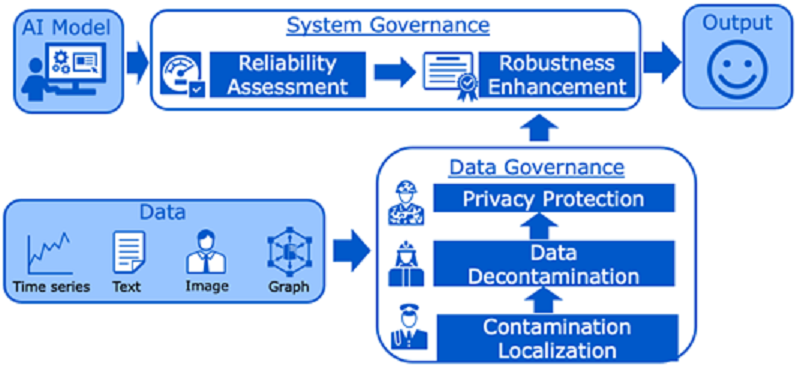
By leveraging big data and deep learning, in recent years, AI technologies have made significant progress. They have been adopted in many applications, including malware detection, image classification, and stock market prediction. As our society becomes more automated, more and more systems will rely on AI techniques. And instead of augmenting human decisions, some AI systems will make their own decisions and execute autonomously. This is extremely risky especially for mission-critical fields (like homeland security, medical diagnosis, and self-driving vehicles). In fact, the advances in AI outpace efforts to curb its potential hazards, because AI systems are vulnerable due to various attacks and biases.
This project aims to develop innovative system testing and data governance engines to identify AI system vulnerabilities, defend against advanced attacks, improve technical robustness, and mitigate technical unfairness/biases. Our engines leverage fine-grained reliability assessment, generalized robustness enhancement, and hardware-based privacy protection techniques to secure both AI model and data throughout the system development life cycle.
Representative Papers: [FACESEC @ CVPR'21] [ContrastNet @ BigData'22] [DicPF @ IJCNN'21]
Multimodal Data Analysis

Multimodal data are prevalent in industrial monitoring, finance, and healthcare. In particular, time series are often tagged with text comments from experts that provide layman users with the domain knowledge to understand the charts. Texts give the patterns qualitative meaning while time series make the words quantitative. Analyzing the relationship between different data types is the key to unraveling the hidden structure of such data.
This project aims to develop machine learning and data mining algorithms that provide insight about multimodal data through joint modeling of time series, natural language texts, and data of other types. Through tasks such as automatic time series explanation, cross-modal retrieval, time series QA, and knowledge discovery, we create virtual domain experts that can comprehend domain-specific terms and use them to explain time series data. Automated financial analyst, plant operator, health advisor, and fitness coach are just a few examples of the next-generation AI-human interaction paradigm enabled by multimodal learning.
Representative Papers: [MATMCD] [MULAN] [OCEAN] [TESSA]
Automated Security Intelligence
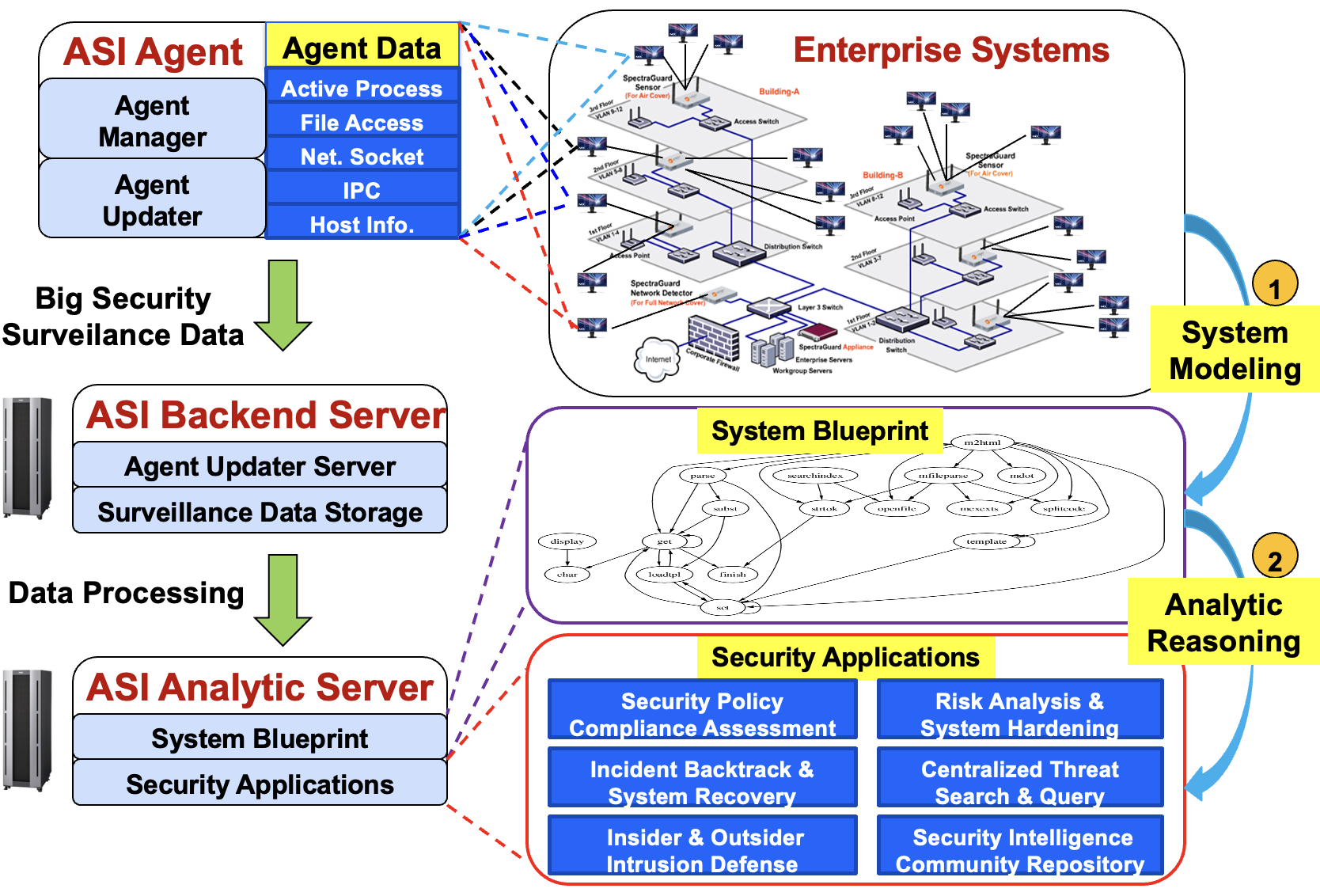
Every day it becomes harder to guarantee enterprise security. Sophisticated attacks are launched from economically-driven, well-organized attackers. Systems are complex and evolving, and it is difficult, if not impossible, to keep track of security vulnerabilities and prepare every employee with enough knowledge and skills. To address these challenges, we propose the automated security intelligence project, inspired by the words of Sun Tzu: “If you know your enemies and yourself, you can win a hundred battles without a single loss.”
Security comes from diligent actions. Actions arise from precise intelligence. Intelligence is based on surveillance data. Automated Security Intelligence (ASI) is a new crusade to defend our systems. ASI aims to employ ubiquitous endpoint monitoring, big-data and AI technologies to bring full visibility to the enterprise, to ease the security and system management, and to track down the sophisticated Advanced Persistent Threats (APT).
Media Reports:
- ASI have been recognized as one of NEC’s cutting edge AI technologies to be included in NEC the WISE.
- NHK TV news reported our technology on Dec. 14th, 2015.
- NEC technology uses artificial intelligence to automatically detect unknown cyber-attacks.
Awards: Won the NEC Business Award 2017; Grand Prize at MM Research Institute Award 2017; and Grand Prix at CEATAC2016 (the largest IT and Electronic Show at Asia).
Representative Papers: [KDD'21] [NDSS'20] [IJCAI'19] [NDSS'19] [CIKM'18] [CIKM'17] [SDM'16] [IJCAI'16]
Dynamic Graph Analysis
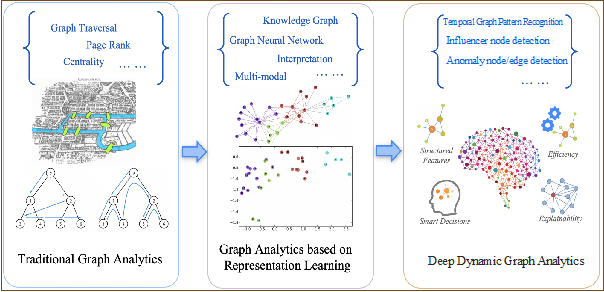
In many big data applications, data with complex structures are connected for their explicit/implicit interactions and are naturally represented as graphs/networks. The world is full of complex and dynamic interactions between diverse objects. The flood of dynamic graph data poses great computational challenges and entails interdisciplinary collaborations.
This project aims to develop innovative dynamic graph analysis (DGA) engines to extract temporal and topological features from complex connected data. DGA offers explainable knowledge learned from dynamic graphs modeling the complex world to support high-quality decision-making in various businesses. GNN, reservoir sampling, contrastive learning, etc., are core technologies to support various real-world DGA applications.
Award: Won Best Paper Award Runner-Up @ KDD'16.
Representative Papers: [CIKM'21] [WWW'20] [KDD'18] [KDD'16] [JIIS] [Thesis]
Data Centered Materials Knowledge Discovery
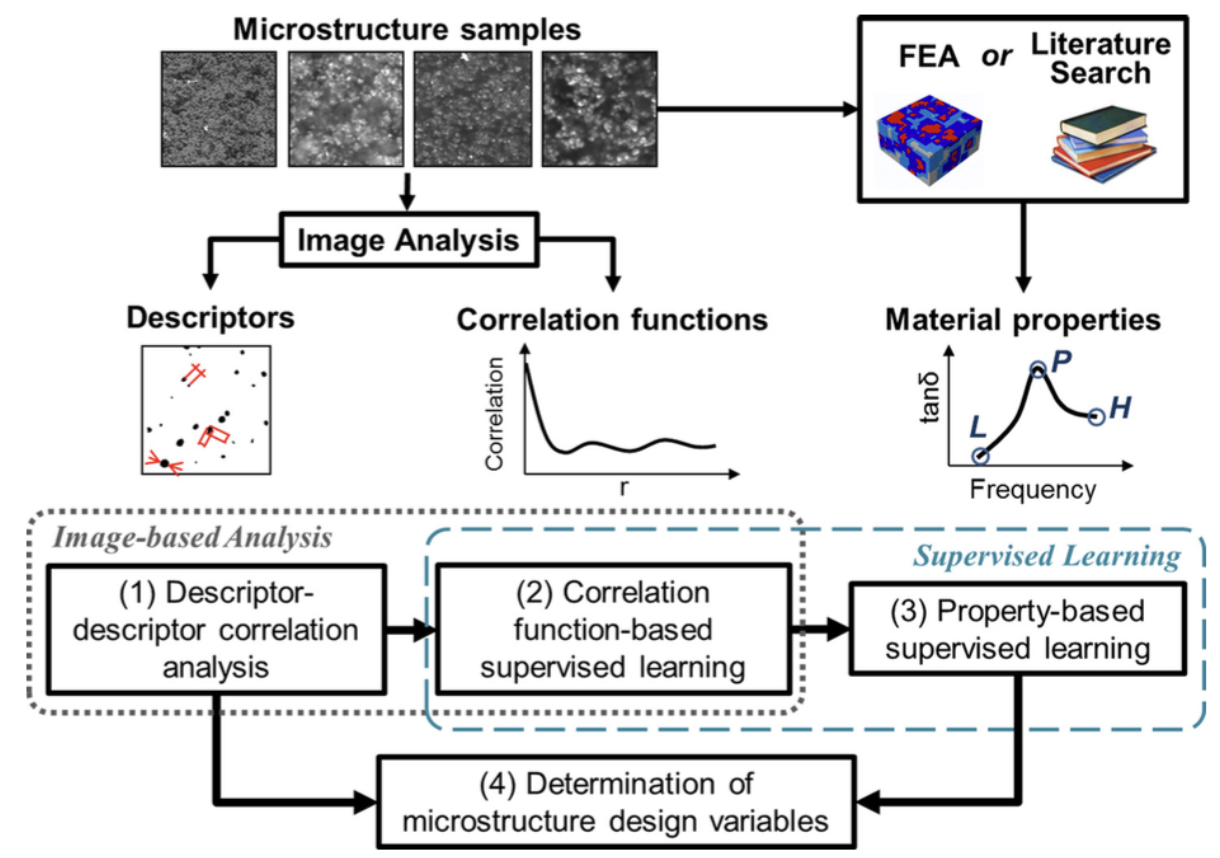
Data mining for materials discovery is concerned with representing materials science problems into a statistical framework, and learning models that describe observations about the processing, structure, and property of materials. The extraction of microstructure-property relationships resides at the basis of nearly all cutting-edge applications of Material Science and Engineering, whose goals are to develop advanced materials for industrial and military purposes, using experimental and computational methodologies. The massive amount of experimental and simulation data produced by modern characterization instruments and computational platforms introduce many challenges in terms of scalability, data storage, complexity, high dimensionality, interpretation, and retrieval. This makes it imperative to employ advanced methods for efficient data storage, retrieval, and analysis, thereby providing opportunities in the scope of high performance data mining for materials informatics.
Large-scale materials databases provide unprecedented opportunities for both supervised (e.g. classification, regression) and unsupervised learning (e.g. clustering, feature learning) in the field of data mining. The use of advanced modeling techniques with various data mining optimization and validation methodologies will allow us to identify strong predictor variables for the outcome of interest (here, a microstructure or a property of a material), and to construct a model for predicting that outcome. This requires advanced data mining techniques for knowledge discovery, which are to combine multiple predictor variables into a predictive model based on supervised data (with known labels/outcomes), and can be used to predict the labels of future test instances.
This work is supported by the Air Force Office of Scientific Research (AFOSR), Department of Defense (DOD), under award number FA9550-12-1-0458.
Representative Papers: [Scientific Reports] [IC3'15]
Understanding, Analyzing, and Retrieving Knowledge from Social Media

Social Media has become one of the most popular platforms to allow users to communicate, and share their interests without being at the same geographical location. With the rapid growth of Social Media sites such as Facebook, LinkedIn, Twitter, Customer reviews (e.g., Amazon, CNET) and Blogs (e.g., WSJ Blogs), there is vast amount of user-generated content. Our goal is to retrieve valuable nuggets of knowledge from this huge amount of data and help users make informed decisions. To achieve this goal, the specfic objectives of the project are as follows.
- Constructing useful information networks from raw datasets.
- Understanding and analysizing useful structures, patterns, and communities in networks.
- Analysis of temporal and special dynamics in networks.
- Analysis of social reputation, influence, and trust.
- User activity modeling, profiling, exploration, and recommendation systems.
- Developing new data mining and machine learning algorithms for social networks.
- New applications and impact of social media in other areas of research.
This work is supported by the NSF (National Science Foundation), Office of CyberInfrastructure (OCI), under award number OCI-1144061.
Representative Papers: [AAAI'17] [KIS] [IJCAI'13] [KDD'13] [CIKM'13] [SDM'13] [Intell. Syst.] [JIIS]
Understanding Climate Change: A Data Driven Approach
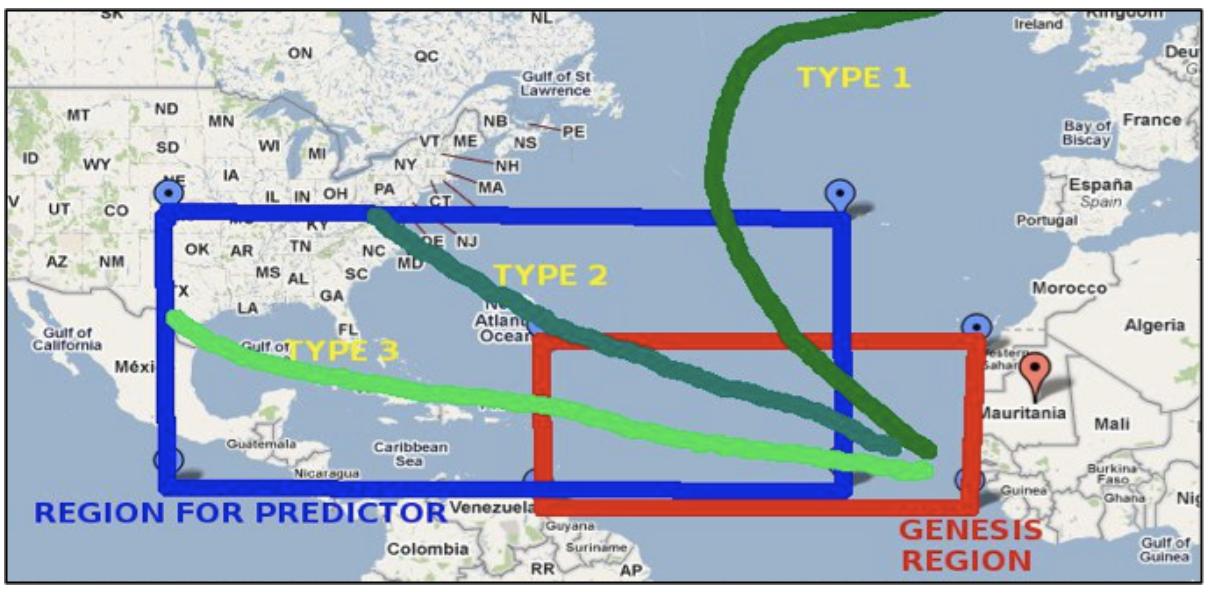
Climate change is the defining environmental challenge now facing our planet. Whether it is an increase in the frequency or intensity of hurricanes, rising sea levels, droughts, floods, or extreme temperatures and severe weather, the social, economic, and environmental consequences are great as the resource-stressed planet nears 7 billion inhabitants later this century. Yet there is considerable uncertainty as to the social and environmental impacts because the predictive potential of numerical models of the earth system is limited. Data driven methods that have been highly successful in other facets of the computational sciences are now being used in the environmental sciences with success. The objective of the Expedition project is to significantly advance key challenges in climate change science by developing exciting and innovative new data driven approaches that take advantage of the wealth of climate and ecosystem data now available from satellite and ground-based sensors, the observational record for atmospheric, oceanic, and terrestrial processes, and physics-based climate model simulations.
This work is supported by NSF (National Science Foundation), Division of Computer and Communication Foundations, under award number CCF-1029166.
Media Reports:
- DOE ASCR Discovery web-magazine.
- NSF News.
- The Conversation.
- Esciencenews.
- Science360 News Service.
- Northwestern University McCormick News.
Representative Papers: [Data Mining and Knowledge Discovery] [IJCAI'13] [SDM'13] [IJCAI'11]
